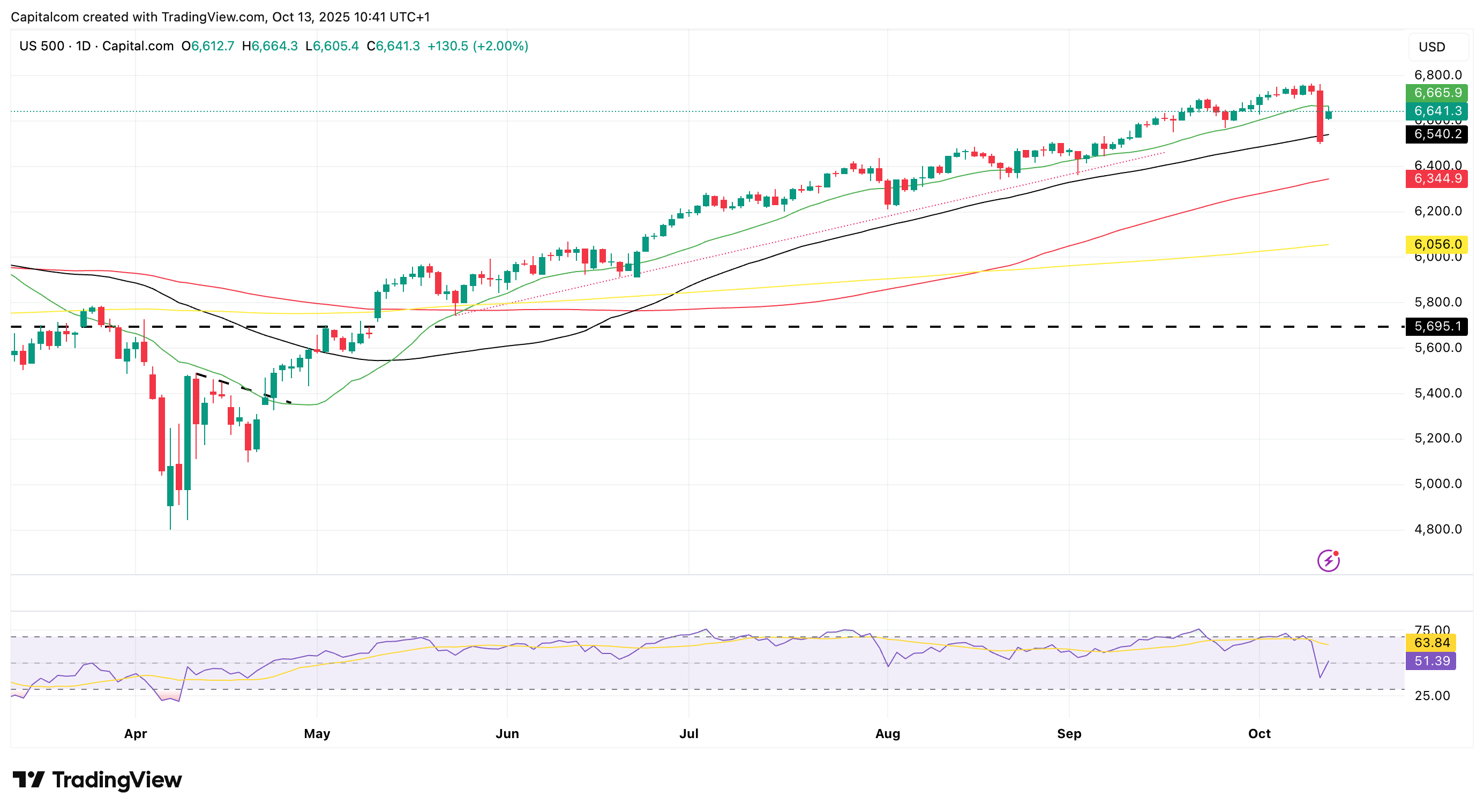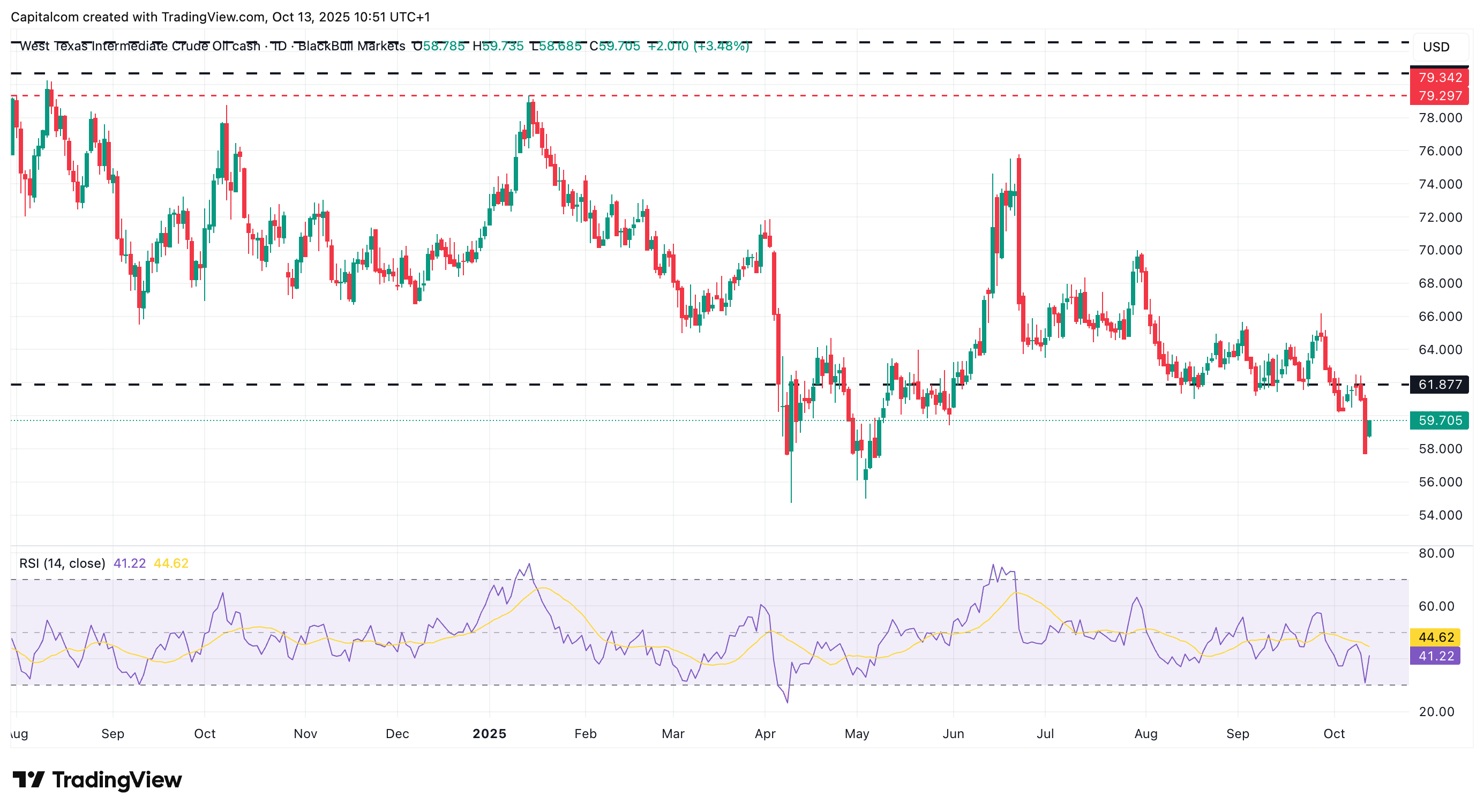Market Mondays: rare earths, tariff risk and where the next moves may come from
Renewed tensions between China and the US weigh on market sentiment, with gold and silver receiving another boost
A subdued week for risk assets was upended late on Friday after fresh US–China trade tensions re-emerged. What began with reports of new Chinese curbs on exports of rare earth minerals morphed into a sharp bout of risk aversion after the US threatened tariffs of up to 100% on Chinese imports from 1 November. The sequence mattered: markets initially took Beijing’s move in their stride, only to be wrong-footed by the size and timing of Washington’s response.
Through most of Friday’s European session, equities were stabilising after a politically driven wobble earlier in the week in Europe. By the time US cash markets opened, the S&P 500 looked set to close roughly flat on the week—evidence that, despite a re-introduction of volatility, dip-buyers still had the upper hand. That changed late in the US Day when the 100% tariff threat hit the wires. Futures lurched lower, cyclicals underperformed, and havens caught a bid. A subsequent, more conciliatory tone on social media helped spark a relief bounce into Monday’s Asian trade, with US futures and several Asian indices coming off their lows. The Aussie dollar—often a clean barometer of China-sensitive risk—rebounded back above the US$0.65 handle after an initial slide.
S&P 500 daily chart

Past performance is not a reliable indicator of future results.
Why rare earths matter—and what Beijing may be signalling
Rare earths sit at the heart of the modern economy, feeding everything from high-end semiconductors to EV motors and advanced defence technologies. China’s latest restrictions—widely viewed as a response to existing US export controls on chips and manufacturing equipment—look less like an economic sledgehammer and more like a negotiating lever. The message appears twofold: first, to put export controls on the table alongside tariff rates; second, to coax both sides back into focused talks after months of drift.
Investors have been asking the right question since Friday: why now? One plausible answer is that Beijing is attempting to shape the next phase of negotiations—on tariffs, on export controls and, potentially, on inbound investment rules—by reminding Washington where critical supply chokepoints still exist. Whether this escalates into hard restrictions or remains theatre to extract concessions is the single biggest swing factor for near-term risk sentiment.
Positioning meets policy risk
The violent knee-jerk told us as much about positioning as it did about policy. Valuations had become rich, momentum extended and volatility sellers comfortable. Markets had been trading as if the tariff saga was largely resolved thanks to progress with the EU, Japan and Korea—China being the conspicuous loose end. When that assumption cracked, crowded longs scrambled. Monday’s efforts to retrace part of the move are consistent with a classic positioning flush rather than a fundamental trend change—for now. The path from here hinges on whether the 100% tariff threat remains active or is walked back quickly.
Gold and silver: momentum with a macro bid
Gold pushed to fresh record highs and, notably, did not fully reverse Friday’s haven surge. The metal’s resilience—despite still-firm equities over recent months—speaks to its evolving role in portfolios as a hedge that has at times, outperformed duration. Central bank buying, persistent geopolitical risk and uncertainty around the policy mix keep the medium-term bull case intact.
Silver has joined the party, breaking higher again. Its dual identity—precious metal and industrial input—usually makes it more sensitive to growth scares, but tightness in liquidity at times, evidence of futures curve contango and a squeeze-like tone have accentuated the upside. Critics argue the narrative is getting ahead of fundamentals; the tape, for now, disagrees. Momentum remains the friend of the trade, albeit with higher volatility than gold.
Oil: trend points lower as demand risks grow
Crude’s price action is telling a different story. After weeks of range-bound trade, prices finally cracked lower, slicing through notable support levels. The catalyst was obvious—tariff-driven growth fears—but the backdrop mattered: OPEC’s flagged output increases for November were smaller than some expected, yet supply remains ample, inventories are comfortable and global activity data have lacked punch. Unless demand surprises to the upside or OPEC+ blinks and re-tightens the taps, rallies look sellable into former support. A run towards the mid-$50s cannot be ruled out if growth data roll over or trade tensions linger.
US crude (WTI) daily chart

Past performance is not a reliable indicator of future results.
The data blackout, the Fed and the rates path
The US government shutdown has left markets flying partially blind just as the FOMC approaches its late-October decision. The implied probability of a hold is high, but the more consequential debate is the glide path for cuts into 2026. Without timely official prints, markets are leaning on private proxies: the weak ADP reading bolstered the “softening labour market” narrative, but confidence is low. Chair Powell speaks this evening; with limited hard data, he is unlikely to pre-commit, though any hint on how the Committee is balancing disinflation progress against growth risks will move pricing at the margin.
Bottom line on rates: there’s a lot of dovishness embedded without much new information to validate it. That makes the curve—and rate-sensitive equity pockets—especially reactive to any surprise in upcoming inflation or jobs numbers if the BLS does manage to publish before month-end.
Earnings season: valuations on trial
Banks kick off Q3 reporting imminently. While not the market’s most exciting cohort, they are macro bellwethers: watch loan growth, arrears and provisioning. Index-level expectations for S&P 500 earnings growth hover around the high-single digits, up modestly from a few weeks ago. Strong revisions remain concentrated in tech, keeping the spotlight on the Magnificent Seven. The bull case is simple: if earnings keep rising, elevated multiples are more defensible, and the “bubble” label loses force. The bear case: any guidance wobble from mega caps, or margin pressure beyond financials and energy, could puncture sentiment quickly.
Overall, markets weren’t shocked that trade tensions resurfaced—they were shocked by the size and timing of the tariff threat after months of complacency. If rhetoric cools quickly, last week’s swoon may prove another buyable scare. If it doesn’t, expect a more protracted, two-way grind: gold supported, oil heavy, equities choppier, and FX taking its cues from Beijing–Washington headlines.